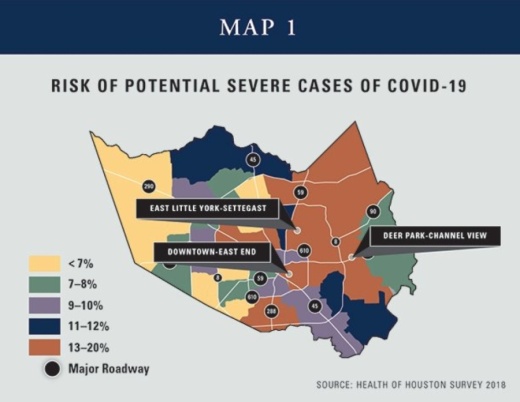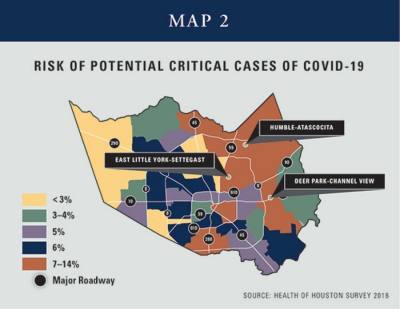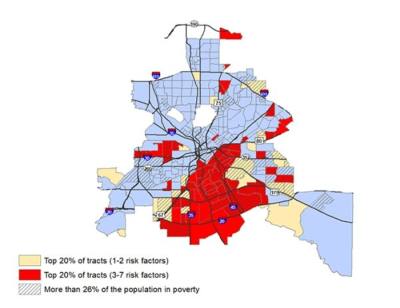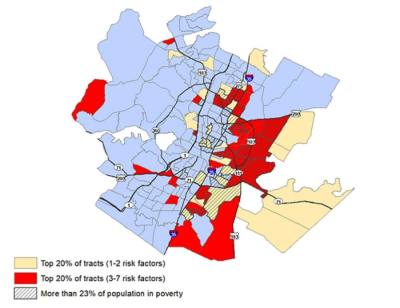The study identified areas with risk factors for hospitalization and critical care in the cities of Dallas, Austin, and San Antonio. Locations were selected based on where severe coronavirus-related disease cases requiring hospitalization are most likely and where social support systems are strained.
"The areas where these two factors coincide represent the most vulnerable segments of the metro population. We hope this report can highlight what regions should be assigned priority in outreach efforts from hospitals and community-based organizations, as well as the resource planning and allocation decisions of local authorities,” said Stephen H. Linder, director of the Institute for Health Policy at UTHealth School of Public Health, in a news release.
The Harris County analysis used the 2018 Health of Houston Survey to define the risk factors for “severe illness” and “critical illness.” A “severe illness” is defined as requiring hospitalization, with risk factors including being over the age of 60 or having chronic diseases. A “critical illness” was defined as not only requiring hospitalization, but also an access to intensive care and ventilators, with risk factors including being over age 65 with chronic obstructive pulmonary disease, heart disease, or diabetes.
In the analysis for Dallas, San Antonio, and Austin, risk factors for a severe illness included heart disease, history of stroke, obesity, chronic obstructive pulmonary disease (COPD), asthma, diabetes, and kidney disease. Of those residents, critical illness tends to develop from heart disease, COPD, or diabetes.
Data for the expanded analysis in Dallas, Austin and San Antonio came from the American Community Survey Five-Year Summary from the U.S. Census Bureau, and the 500 Cities Project from the Centers for Disease Control and Prevention. Data for the Harris County analysis was based on the 2018 Health of Houston Survey, pulling evidence from the New England Journal of Medicine and the Centers for Disease Control and Prevention.
The areas with residents at higher risk of severe or critical illness in Harris County, Dallas and Austin are listed below.
Harris County
East Little York, Settegast, Deer Park, Channelview, Downtown, and East End have the highest concentrations of residents over the age of 60 or with chronic diseases and are at risk for severe illness from COVID-19, according to the news release.
Higher concentrations of residents at high risk of a critical illness live in Deer Park, Channelview, East Little York, Settegast, along with Humble, Atascocita and Spring/The Woodlands.
Dallas
There are higher concentrations of residents at higher risk of severe illness in neighborhoods south of Interstate 30 and east of Interstate 35, according to the release. These include portions of Oak Cliff, Cedar Crest, and South Dallas. West Dallas also has a high concentration of residents at risk for severe illness, the research team found.
Austin
There are more residents at higher risk of severe illness living in East and North Austin. Those areas include east of Interstate 35 and north of Highway 71, as well as north of Highway 290.
“Much of this population lives in poverty, but a majority of the residents are under the age of 60,” the research team concluded, according to the news release.








